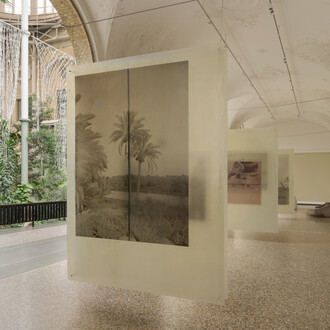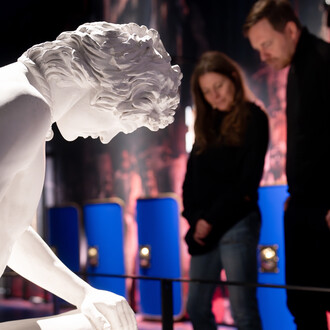The exhibition French art 1870-1925 features both major works and hidden gems from the Glyptotek’s own collection. Explore a selection of works from the Glyptotek’s outstanding Paul Gauguin collection. Or peruse a wide range of other major works by some of the most significant artists of the period – for example, Paul Cézanne, Edgar Degas, Vincent van Gogh, Claude Monet and Berthe Morisot. Featuring mainly oil paintings, but also pastels and small marble, bronze and ceramic sculptures, the exhibition presents a rich and compelling story about the abundant variety, intensity and inventiveness in the art of the period.
An artists’ group is born
In 1874, a group of Parisian artists decided to exhibit their works together in protest against their rejection by the Salon, the official exhibition venue. The group, which would later become known as the ‘Impressionists’, included artists such as Claude Monet, Berthe Morisot, Camille Pissarro and Pierre-Auguste Renoir. Together, they represented a brand new kind of painting, in which light and colour were the overriding elements. They often worked outdoors, where they had the best opportunities to observe the fleeting light, colour and movement of the moment, be it a landscape or the bustle of urban life. The characteristics of the style included thick layers of vibrant, unmixed colour pigments and unconventional cropping.
New directions for painting
During the 1880s and 1890s, Europe witnessed a welter of artistic trends, either in dialogue with, or in opposition to Impressionism. Painting should no longer be a reflection of the seen world and its phenomena. It was time for it to become an independent art form with its own, unique expressive possibilities. Edgar Degas – and later Paul Gauguin – was dedicated to transforming art into something more than just a depiction of things observed. Vincent van Gogh’s expressive use of colours and oil paint pushed painting to a dramatic extreme, while Paul Cézanne, with his more intellectual approach, challenged the surface and volume of a painting. Pierre Bonnard painted intimate interior scenes with bold cropping, while Henri de Toulouse-Lautrec and Pablo Picasso portrayed modern urban life. European painting took many new directions, bolstered by a rapidly changing art market, in which the Salon, with its ultra-conservatism, no longer had a monopoly on the market or good taste.
Degas’ sculptures
After the death of Edgar Degas, more than 150 wax figures were found in his studio. With the exception of his sculpture, The little fourteen-year-old dancer, he did not regard these wax figures as potential works of art. They were practice pieces. Degas used them to study the movement, balance and proportions of the body. 72 of them were cast in bronze by the artist’s descendants, and the Glyptotek is one of the few museums in the world to own a complete collection. The exhibition displays a selection of Degas’ balancing ballerinas, women grooming themselves and horses either galloping or at rest.
Edgar Degas’ sculpture The little fourteen-year-old dancer has been part of the Glyptotek’s French collection since 1949. The sculpture was originally made of painted wax, and exhibited with a tulle skirt around its waist, real human hair, silk ribbon, linen shoes and a cotton top. It was not until after Degas’ death that it was cast in bronze. Until recently, the dancer wore an old faded skirt around her waist – so fragile that it needed to be replaced. There are 25 versions of the dancer in the world and, if you compare the skirts, they are all very different. The museum chose to base its reconstruction of the skirt on existing knowledge about the appearance of the skirt when Degas exhibited the work at the Sixth Impressionist Exhibition in 1881. In this exhibition, you can see the dancer’s new skirt and learn all about the conservation process and the research that went into it.
















